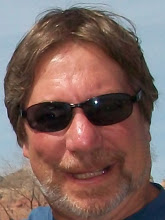Goodyear experienced a rare rain all day Thursday. The team couldn't take the field but held skull sessions and discussed fundamentals while they pondered unique center field options.
Thirdbase/catching coach J.R. House wrote the plan for the daily work this spring in fact he made two plans. One for sunny days and one for rainy days.
"We're using the cage for live BP. Sometimes you can use these days to your advantage," David Bell said. "We had a fundamentals meetings that we won't be able to do on the field. We just stayed in the clubhouse. We will get some extra focus they might not do on regular days."
The Reds also have made plans to fill center field
 |
| http://www.wiedemannbeer.com/ |
Scott Schebler is the leading candidate with 16 games at the position last year but the Reds have some intriguing alternatives with Nick Senzel and Michael Lorenzen.
Bell is interested in putting Schebler in center over Yasiel Puig and Matt Kemp. Both played center at times before the Reds traded for them. Phillip Ervin played four of his 76 games in center last season.
“With Scheb we'll move him around quite a bit. I'm interested in seeing him in center. Everyone I've talked are confident that he can do it,” Bell said.
Hamilton was one of the best defensive center fielders in baseball after being converted from shortstop. The Reds are trying to duplicate the move, First draft pick (second overall) in the 2016 draft, Nick Senzel, is going to get a chance to get his bat in the lineup.
“The first time I saw him, I thought this guy can really move,” Bell said. “I think he's a good enough athlete to do it.”
Senzel has never played the outfield at any level but that is likely to change on Monday in Peoria against the Seattle Mariners. The 23-year old is preparing with drills during batting practice.
“The biggest thing is to make sure my foot work is there, my first step, just reactionary stuff,” said Senzel, who is reading the flight of batted balls off the bat. “It is another position I can get better at. It is a challenging position. You're covering a lot of ground, you have to cover the gaps. I'm excited about it.”
Senzel played third base at the University of Tennessee, and shortstop in Cactus League games last spring. He won't abandon the infield completely.
“I'm learning it relatively late in my minor league career,” said Senseless, who has a good chance of making his Major League debut sometime this season. “I'm going to be learning it in the big leagues. I think that puts a more challenging aspect on it. I'm doing it what's best for me.”
 |
| ht[[s://amazon.com/ |
Senzel can explain the mentality of the transition.
“There is more communication from center field,” Senzel said. “You see more from there. You have to communicate when you move. You see things they can't see in left and right. I have to communcate that to them. You have to know whether the other outfielders are better at coming in or catching the ball over the shoulder.”
Michael Lorenzen provides unique alternative. As the starting center fielder at Cal State Fullerton, he would often close out games on the mound. The Reds drafted him in the first round in 2013 to pitch.
“I havn't been able to do that in pro ball,” Lorenzen said. “The best thing I do on the field is play center. Just pitching doesn't seem natural to me.”
The Reds were clear that pitching is the priority, yet value his utility. They put together a plan with input from Lorenzen to balance the work required for both.
“We put together a plan for the whole spring, knowing that we adjust it at anytime. He was part of the planning. We talked about focusing on pitching. We're going to build him up. On days we've identified, as good day based on his pitching build up, we'll focus more on getting more work in the outfield” Bell said. “Steve Bauman, Sean Maron, Pickler and Turner, everyone was involved in planning. We have to keep an eye on it. It is a unique situation, something you don't do every day.”
Collectively, they developed a plan to get Lorenzen in the field the second half of spring.
“We've come up with a pretty good plan. It is them trusting that I'm a good enough athlete to maybe not do all the conditioning,” Lorenzen explained as he revealed the thinking process. “Running down balls in the outfield is conditioning. I'm doing the same conditioning that the other pitchers are doing but I'm doing it actively by running down balls. Sometimes instead of doing PFP (pitchers fielding practice) because PFP will not make me a better outfielder but doing outfield work will make me a better fielder on the mound, so no PFP. We're just using some common sense. It is not very hard. We have a plan together. We are all on the same page. That's how it works."
“We will have him pitch an inning and stay in the game,” Bell said. “It's exciting. I have to slow myself down. I think it's cool that he's preparing himself the way he is. This schedule keeps us from getting ahead of ourselves. He is giving us options to go out and win.”



No comments:
Post a Comment